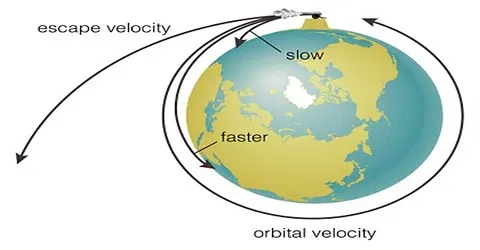
In our generation, space exploration has been an extremely valuable way to learn more about our solar system and our galaxy, the Milky Way. It is astounding that humans have been able to set foot on the moon, and that astronomical research centers have sent probes to a variety of astronomical objects within our galaxy, including planets. However, how is it possible that we are able to have objects, such as rockets, leave earth to explore the unknown within space? One main component of this is escape velocity, which was revealed by Issac Newton in the 1700’s. This is the speed that is required for any object to leave or escape a gravitational pull. One common example of this, is Earth’s escape velocity which is approximately 11.2 km/s, which is very fast! In fact, the escape velocity is about 34 times the speed of sound. The escape velocity was founded upon the important principle of the conservation of energy, in which energy cannot be created or destroyed. The equation for escape velocity implies that the final kinetic and potential energy are equal to zero due to an infinite distance. So the initial kinetic and potential energy are set equal to zero and the final equation is ve = SqrRt (2GM/R). Additionally, the escape velocity depends on where the object is in relation to the planet. One example, is that near the equator in the east, the escape velocity is less than the escape velocity in the equator in the west. However, a more commonly known example is that the escape velocity depends on the altitude of where the object is in relation to the planet. For example, if it is further away from the surface, then the escape velocity is much less, than if the object was at the surface because the distance is greater. This is seen in the equation listed above because the square root of R (distance) is inversely related to escape velocity. This understanding is important when applied to rockets escaping earth. When they are launched they will orbit Earth near the surface with an orbital velocity. In this orbit they have to reach a certain velocity in order to escape the gravitational pull that was initially holding the rocket to earth. Once the escape velocity is acquired, the rocket can then escape Earth’s gravitational pull, regardless of its mass, and reach its assigned destination. It’s crazy to think that without Issac Newton’s outstanding work on gravity and his initial finding of escape velocity, we would not have had the outstanding space exploration that we have today!


